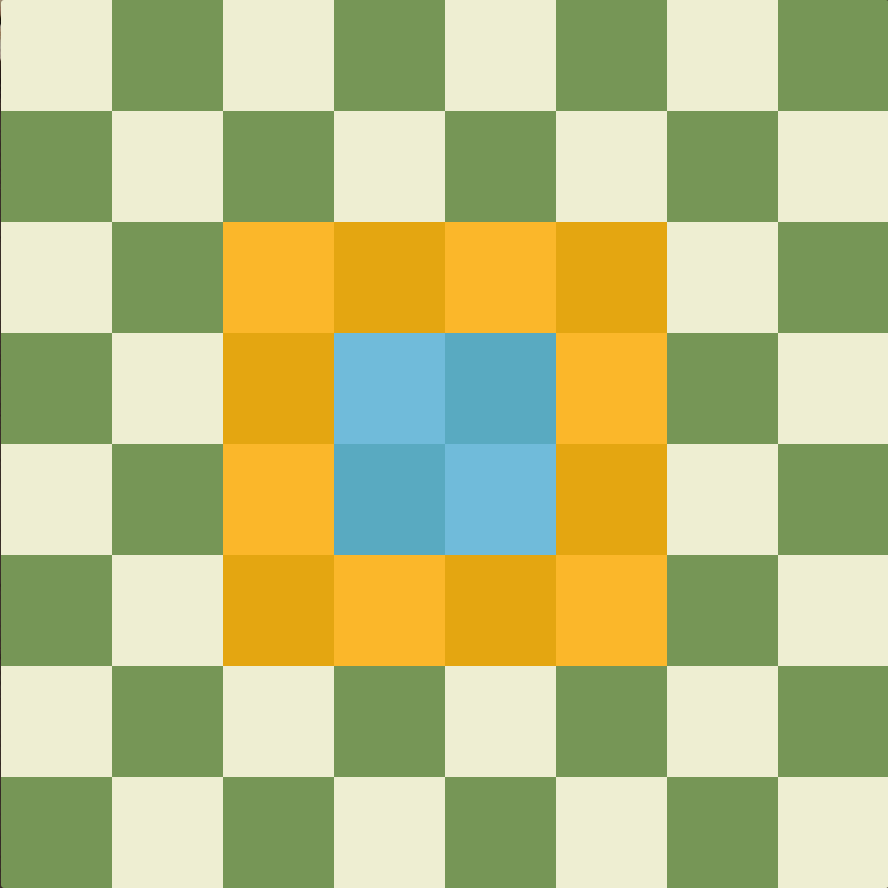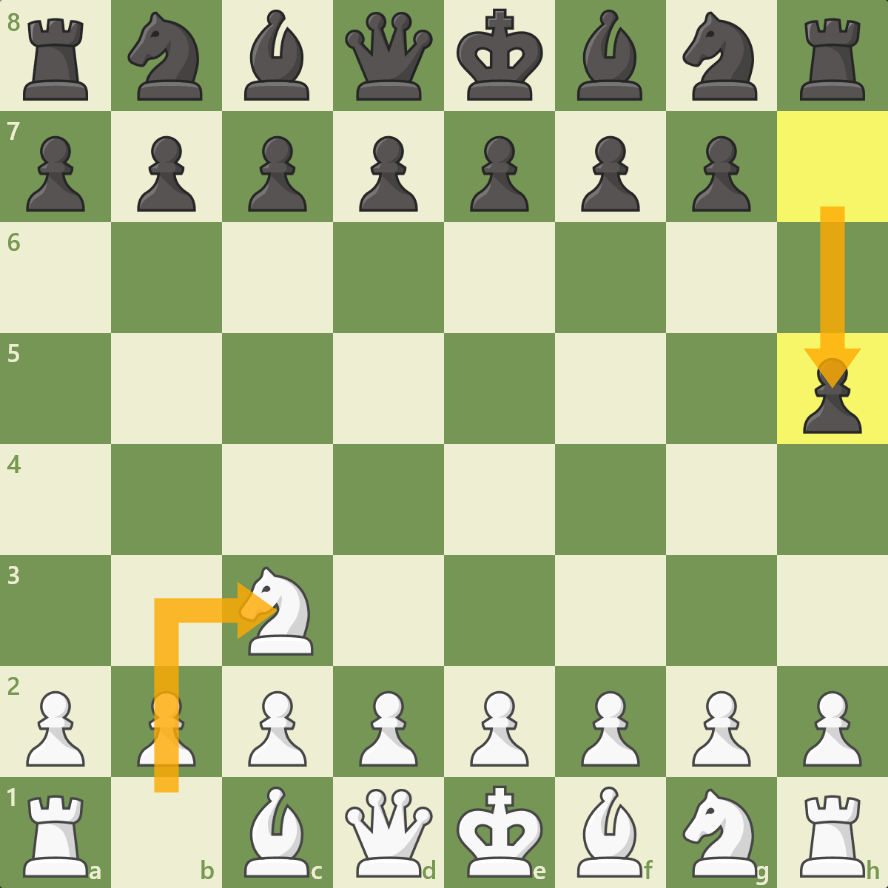
Center
Chess center can actually mean a couple things. You probably have a local chess center or club, but this article is about the center of the chessboard. (If you're new to the game, that's one of the first of our Chess Terms you should familiarize yourself with.)
What Is The Center?
There are a few ways to think of the center. Mainly, it is the four squares in the middle of the board: d4, d5, e4, e5. The 12 squares surrounding them are also sometimes considered part of the center.

Even the central d- and e-files are sometimes called the center. This is apparent when we call the d- and e-pawns "center pawns" even when they are not on one of the four central squares. Or, have you heard about keeping your king in the center too long? Not very many players are moving their king to d4 in the opening. (Unless it's the King of the Hill variant!) But because the king starts on a central file, the e-file, it's usually more vulnerable there than after castling.
Why Is The Center Important?
Whoever controls the center often, but not always, has the advantage. The main reason for this is that every piece except the rook controls more squares the more centralized it is, thus exerting more influence over the position.
| Piece | Squares controlled from d4/e4/d5/e5 | Squares controlled from a1/h1/a8/h8 |
| Knight | 8 | 2 |
| Bishop | 13 | 7 |
| Rook | 14 | 14 |
| Queen | 27 | 21 |
| King | 8 | 3 |
The knight is particularly reliant on centralization to be effective. The rook is unaffected; bishops can be useful on a single diagonal, for instance when fianchettoed; the queen, because it combines the rook and the bishop, is not terribly limited from the edge of the board; but the knight's influence is cut in half on the edge, and reduced by 75% if consigned to a corner—playing the knight to a corner without planning to quickly maneuver it to a more influential position is never recommended unless it wins immediately tactically.

Most openings are a fight for central control, which can be apparent in many ways.
- The two most popular opening moves are 1.e4 and 1.d4, both of which occupy and control a central square (d5 or e5). Black's symmetrical replies (1...e5 or 1...d5) accomplish the same goals.
- Hypermodern openings like the Nimzo-Indian (1.d4 Nf6 2.c4 e6 3.Nc3 Bb4) see one side trying to control the center with piece play instead of pawns. In the Nimzo specifically, Black pins the knight on c3 to increase control over e4.
- The Sicilian Defense (1.e4 c5), where Black's main idea is to trade the c-pawn for White's more central d-pawn (e.g. after 2.Nf3 d6 3.d4 cxd4). The idea behind the Alapin Sicilian (2.c3) for White is to not allow Black to do this.
Test Your Knowledge
Test 1: Which color bishop controls more central squares?

Answer 1: Black's bishop on g7 controls two central squares: d4 and e5. White's bishop controls none of the four central squares.
Test 2: After the very unusual opening moves 1.Nc3 h5, which side has done more to control the center?

Answer 2: The knight move 1.Nc3 moves the knight closer to the center where it controls e4 and d5. The pawn move 1...h5, meanwhile, does nothing in the center.
Conclusion
Now you know what the center is, why it's important, and how pieces and pawns can control it. Learn more with this Chess.com Lesson from GM Dejan Bojkov on how to "Play in the Center"!







